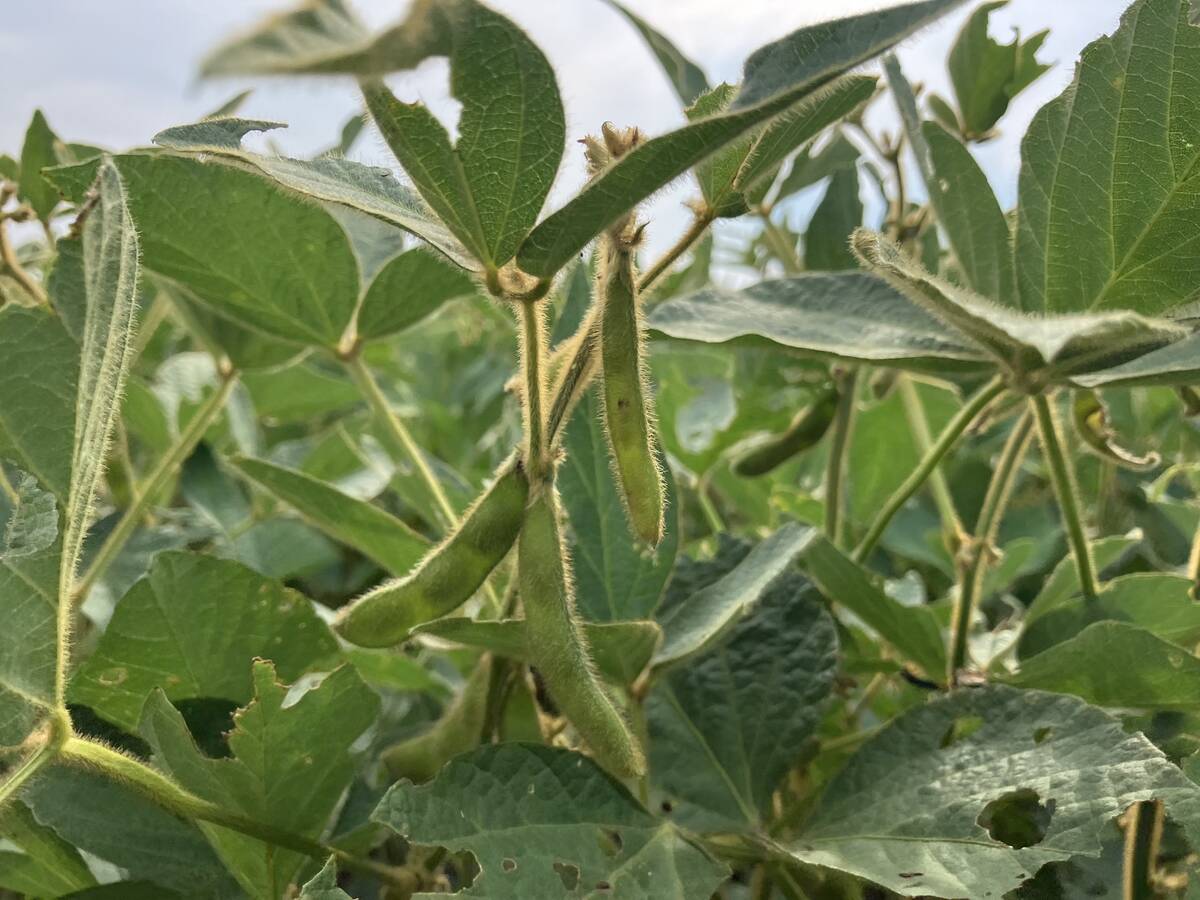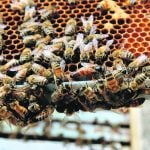Since 1987, the United States Department of Agriculture has overseen genetically modified organisms through its Animal and Plant Health Inspection Service, which regulates GMOs based on “plant pest risk.”
GMO developers must petition APHIS to grant their GMOs nonregulated status, which is permission to grow the plants without official oversight. To win approval, the companies must demonstrate that their tests show the new varieties do not pose a risk to plant health.
“APHIS grants nonregulated status only when it determines that the new genetically engineered variety is unlikely to pose a plant pest risk,” said USDA spokesperson Michael Pina, who labelled the current regulatory system as “strong.”
Read Also

U.S. loses out on sales of soybean to China
U.S. soybean exporters risk missing out on billions of dollars worth of sales to China this year as trade talks drag on and buyers in the top oilseed importer lock in cargoes from Brazil.
The USDA has said it wants to make changes that ensure safety while making the process more transparent to the public and more efficient and easier for GMO developers to navigate.
Still, the USDA has been formally debating regulatory changes for more than six years and issued proposed new rules in fall 2008, allowing public comment through last summer as it must under the law.
The proposed overhaul drew more than 15,000 comments, many of them expressing fears that the regulatory changes as laid out would not address key concerns.
In one public comment, physician Amy Dean, a board member for the research and education group American Academy of Environmental Medicine, which is seeking a moratorium on GM food, said the proposed changes would “significantly weaken or eliminate oversight of GM crops.”
Robert Peterson, a Montana State University scientist and leader of the university’s “biological risk assessment” program, told regulators that while he agreed with some of the proposed regulatory changes, he thought the agency’s risk assessment protocols were fundamentally flawed.
“Recent research reveals that the approach advocated by APHIS is not scientifically sound and can lead to bad decisions,” Peterson said.
At the Food and Drug Administration, GMOs are treated much the same as food from other plant varieties.
GMO developers are not required to consult with the FDA on safety issues, and the agency sees no need for risk-based monitoring efforts for GM crops because there are no current safety concerns, said FDA spokesperson Rita Chappelle.
The agency stressed that the burden for ensuring safety lies with the companies.
“Manufacturers have an obligation to ensure that their products continue to be safe each and every day,” Chappelle said.
At the Environmental Protection Agency, officials also say the burden of proof is with the corporate developers of the technology. They also say they have at least 20 scientists conducting comprehensive analyses on the products that come before the agency, such as BT corn and BT cotton, which are altered to protect the plants against pests.
The agency also routinely seeks outside advice from experts who sit on its scientific advisory panels.
Over the last several months, the Environmental Protection Agency has also started allowing more public input into its review of new products.
“Transparency and open government is a major priority of the (U.S. president Barack) Obama administration,” said Keith Matthews, acting director of the agency’s biopesticides and pollution prevention division. “We are adding a significant amount of public participation.”
Further to the agency’s mission of environmental protection, officials said it reviews products every 15 years for adverse effects. EPA senior policy adviser Bill Jordan said glyphosate could come under review soon.
“We have an ongoing responsibility to make sure products that are in the marketplace continue to meet the safety standards of the pesticide law,” he said.
“We have a program called registration review. Sometime soon we’ll be getting to glyphosate. I would expect that we would look at emerging research on its environmental effects and see whether that leads us to change the terms and conditions of registration or limit its use in some way.”
Concerns about GM crops and the lack of broad testing hit a boiling point last year.
In February 2009, 26 leading academic entomologists issued a public statement to the EPA complaining that they were restricted from doing independent research by technology agreements that GMO developers attach to every bag of biotech seed they sell. The agreements disallow any research that is not first approved by the companies.
“No truly independent research can be legally conducted on many critical questions regarding the technology,” the scientists said in their statement.
University of Minnesota entomologist Ken Ostlie, who co-authored the statement, said some of the concerns involve corn engineered to resist corn rootworm pests. Biotech corn crops harvested last fall in Minnesota, Iowa and parts of Wisconsin and South Dakota showed damage and disease, and some fear the biotech corn could sicken livestock.
“We don’t know if something is going on with the plant and the technology or with the insect. We just know things didn’t work the way they were supposed to,” said Ostlie.
“It would be nice to have independently verifiable information going into EPA’s decision-making beyond just what the company provides.”
Christian Krupke, an entomologist at Purdue University, said the technology engineered into the plants has many benefits, but more research is needed on effects.
“We are all fans of this technology,” Krupke said. “The problem is we are not getting access to ask the questions that need to be asked that maybe the companies don’t want to ask.”
A backlash against biotech crops has swept many countries. India became one of the latest hot spots in February when biotech opponents created such an uprising that environment minister Jairam Ramesh blocked the release of a GM eggplant made by Monsanto.
India already allows planting of GM cotton, but Ramesh said there was not enough public trust to support the introduction of a GM food crop until more research was done.
Among the critics of the GM eggplant was Tiruvadi Jagadisan, a former managing director of Monsanto’s India operations.
Jagadisan, who worked with Monsanto for 18 years, said he believed there were “very many legitimate concerns about the safety of GM food crops for humans, animals and the environment.”
He said Monsanto did not give “accurate information to the public” about its eggplant.
“No extensive tests have been done to assess the effect of consuming GM crops on future generations,” Jagadisan said, an assertion common among critics.
Monsanto called Jagadisan’s assertions baseless and said India’s regulatory regime requires “extensive and rigid crop safety assessments, following strict scientific protocols.”
Nina Fedoroff, a special adviser to the U.S. State Department, which advocates GMOs overseas, and a supporter of Monsanto’s technology, called the incident “one little setback” to gaining worldwide acceptance of biotech crops. She said with rising food prices and population growth, biotech crop technology will become increasingly important.
Criticisms of Monsanto and its technology are unfair, Fedoroff added.
“They’ve certainly made mistakes, but they’ve done a whole lot more good than harm. They are investing more in crop improvements than our government is.”
Robert Kremer, a government microbiologist at the University of Missouri, is focussed on work involving general soil quality. As a side project in support of that research, he has spent the last several years studying soil and plant growth tests that appear to show ravaged root systems in Roundup Ready plants.
The crops have been subjected to glyphosate applications and appear to be impervious to the herbicide. However, Kremer said the roots seem to tell a different story.
“This is supposed to be a wonderful tool for the farmer … but in many situations it may actually be a detriment,” Kremer said.
“We have glyphosate released into the soil which appears to be affecting root growth and root-associated microbes. We need to understand what is the long-term trend here.”
The development of crops engineered to tolerate glyphosate spurred a surge in use of the chemical. Approximately 383 million pounds were sold from 1996 to 2008, according to a report released by the Organic Center, the Union for Concerned Scientists and the Center for Food Safety.
Monsanto said the chemical binds tightly to most types of soil, is not harmful and does not harm crops.
However, some scientists say there are indications of increased root fungal disease as well as nutrient deficiencies in Roundup Ready crops. For example, they say manganese deficiency in soybeans appears to be an issue in key farming areas that include Indiana, Michigan, Kansas and Wisconsin.
Outside researchers have also raised concerns over the years that glyphosate use may be linked to cancer, miscarriages and other health problems in humans.
Monsanto says extensive research shows glyphosate is safe for humans and the environment. The company says extensive investigation into changes in soil micro-organisms has found no long-term ill effects.
Peering into his Petri dishes, Kremer isn’t so sure.
“Science is not being considered in policy setting and deregulation,” Kremer said. “This research is important. We need to be vigilant.”
















